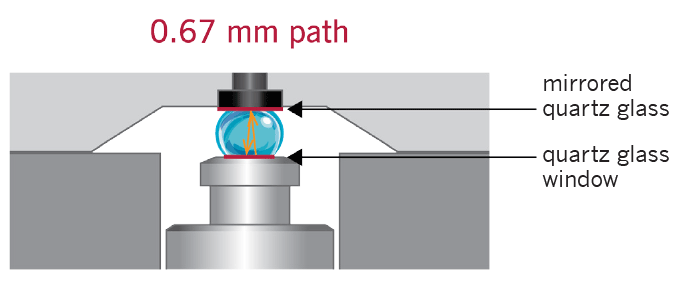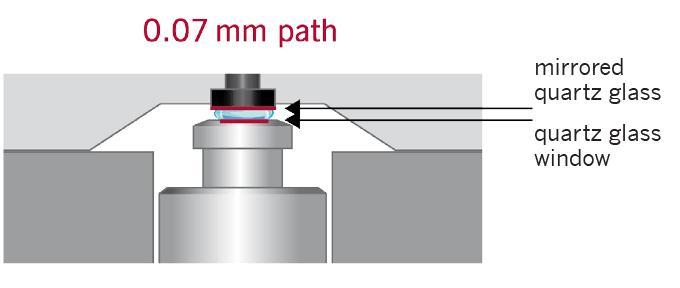Technical Note 2 – UV/Vis Spectrophotometer Sample Compression Technology™
Principle of Small Volume Measurements with a UV/Vis Spectrophotometer

UV/Vis Spectrophotometer Sample Compression
In comparison to other technologies, the NanoPhotometer®, best in class UV/Vis Spectrophotometer on the market today, uses an optical geometry similar to a microscope setup. 0.3 µl – 2 µl of a sample are applied to the pedestal, which acts as a “microscope slide”. The “cover glass” is a mirror embedded into the lid which when lowered squeezes the drop between two quartz surfaces (indicated by red lines in Figure 1 & 2).
A capillary film, shaped into a precisely defined flat layer of even thickness, is formed eliminating the need for surface tension. At the same time the sealed micro-environment limits evaporation. From below, light shines through the sample, is reflected by the upper mirror and returned through the lower quartz window in the pedestal (see Figure 1 orange arrows) onto the detector.

Figure 1: Sample drop squeezed between two quartz surfaces (0.67 mm path); light path indicated by orange arrows.
The NanoPhotometer® NP80/N60/N50 always reads the 0.67 mm path length first and only if the sample is not in the linear range, moves the pedestal to form the second shorter 0.07 mm path (Figure 2).

Figure 2: Sample drop squeezed between two quartz surfaces (0.07 mm path).
Contained Sample Environment
The patented Sample Compression Technology™ is key to obtain reliable and accurate readings from ultra-low volume samples. With the contained microenvironment geometry, this instrument, UV/Vis Spectrophotometer, is optimized for reliable performance in all climate zones and also is ideal for challenging studies like low surface tension proteins, volatile solvents or kinetics
in a drop.